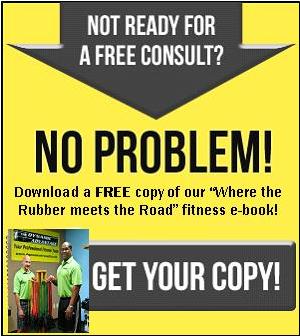 If you’ve never suffered from back pain, you probably will. Conventional wisdom holds that eight out of 10 people under the age of 45 will suffer benign or malignant back pain at some point. Fortunately, heeding the warning signs can help you treat, cure and even prevent this fate. Inflammation is the biggest indicator, but spotting it can be tricky. As Itell patients all the time, knowledge is power.
If you’ve never suffered from back pain, you probably will. Conventional wisdom holds that eight out of 10 people under the age of 45 will suffer benign or malignant back pain at some point. Fortunately, heeding the warning signs can help you treat, cure and even prevent this fate. Inflammation is the biggest indicator, but spotting it can be tricky. As Itell patients all the time, knowledge is power.
An important point to remember is that pathology—whether malignant or benign— is a vicious cycle. Normal daily activities can trigger an injury to specific tissue so small that it’s undetectable.
Something as simple as overdoing it at the gym, lifting a box that’s too heavy or doing so too quickly, can be the culprit.
Ironically, the vicious pain cycle begins when we do nothing about these small injuries. As we continue to perform our normal activities without a second thought, a small, localized injury causes inflammation.
Four signs of inflammation apply across the board and are easily detected:
1. Pain. Injured soft tissue is overly sensitive. Even smaller movements of this tissue, which would not normally cause pain, suddenly will. Hypersensitivity is the result of other chemi¬cals being delivered to the area for specific rea¬sons. It is important to note that pain related to inflammation is constant because chemi¬cals are constantly released to the injured area. Unless you are taking medications to reduce the inflammation, it will not just come and go.
2. Heat. The injured tissue becomes warmer to the touch. Blood vessels dilate to deliver chemicals and other types of cells to the area to start the healing process. When these sub¬stances build up, it produces warmth. As dilated vessels bring these necessary chemicals to the injured tissue, redness occurs. The more super¬ficial (close to the skin) the injury, the redder the area will be.
3. Swelling. This is another visible and pal¬pable effect of inflammation. If you compare injured tissue on one side of your body to the same tissue on the other side, it will likely appear larger or swollen. Swelling is caused as the blood vessels dilate and bring more fluid to the injury site. The fluid becomes trapped in a localized area.
4. Loss of Function. This inflammation indi¬cator is more man-made than natural, but just as important to recognize. The injured area should immediately be rested for a few days; the inflammation process starts right away but can take up to 10 days to run its course. If the injured area is worked during this time, the inflammatory reaction increases and ongoing release of chemicals ensues. All this can ramp up fibrinogen, or the laying down of scar tis¬sue—often invisible to the eye since it occurs deep within tissue, but a persistent source of pain down the road.
It is worth noting that a direct correlation exists between extent of injury and the inflam-matory response. For example, a small cut on the finger or a low-grade muscle strain will not produce all these textbook signs. Inflammation summons the changes necessary for healing to begin. If it isn’t controlled, it will control us rather than the other way around. Abenign, fix¬able injury will remain benign, but it will cause pain—and eventually disability. As more minor injuries are ignored, the vicious cycle loops over itself, and you have a big problem building.
Of course, your pain might also be the result of a severe, traumatic injury that causes imme¬diate damage. Maybe you slipped and fell, or were involved in a car accident. In this case, it is wrong to assume that a bigger problem requires a different approach.
Certainly, you might have to be gentler with yourself after a severe back injury. But an injury is an injury, and the same process is at work inside your body. The only real difference is that, given the immediate severity of the pain and its disabling effects, you’re forced to pay attention to inflammation from the get-go.
Even if you find yourself in the midst of a vicious pain cycle, you can break out—but you have to do it right way or the pain will endure. The only correct way to tackle back pain and inflammation is to heed the warning signs.
Then, enlist the help of a licensed physical therapist, who possesses understanding of human physiology and the body at work, to guide you down the path to recovery.
n Scott Kushner, PT, MS, Cert. MDT, is author of Back to Basics: A No-Duh Guide to Prevent Back Injury —and Maybe Even Surgery. He received his formal educa¬tion at Thomas Jefferson University in Philadelphia. Kushner works for Gentiva Health Services
Your Professional Fitness Team
| 2507 E Washington Blvd. | |
| Pasadena CA 91104 | |
| (626) 314-2588 | |





